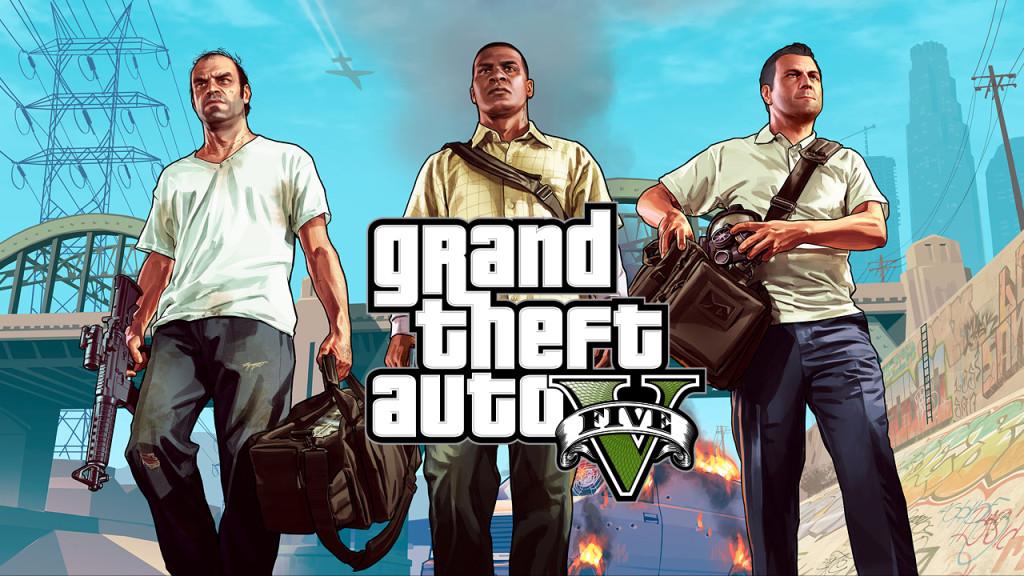Not all violence is equal
EFFECTS Video games make fun, not war.
“Grand Theft Auto V” features three protagonist characters that cause havoc in a fictionalized Los Angeles-esque metropolis. Image courtesy The Vine.
There has been a great deal of controversy in the last couple of years over excessive violence in video games, the most recent example being “Grand Theft Auto V.”
Of course, the ever-present question is, “Why should I care?” The majority of the controversy lies with kids getting access to it; I’m a college student, and I can do whatever I want.
It’s still important. Even if you don’t play video games at all, chances are you have friends that do.
Video games are the art of this generation, just like film was of the last — and, just like other forms of art, they can be mature story-telling devices.
Controversy and outrage are the first steps on the road to censorship. Like it or not, video games are an art form, and complaints about video games are complaints about art. The outrage and controversy might not amount to much now, but, if left unanswered, it can morph into restriction of artistic and creative freedom.
Though there tends to be controversy regarding violence in any artistic medium, video games and the GTA series seem to inspire a special kind of outrage.
There are several possible reasons for this. Video games tend to be more about projection and immersion: Putting yourself in that world and projecting yourself onto the main character.
The other day while I was playing GTA V, I jacked a fancy-looking sports car, drove it off the freeway into the middle of a six-lane intersection, flipped it end over end by driving too fast into a ramp and sent it hurtling towards a gas station at top speed before leaping out at the last second to watch the fiery explosion.
Would I do any of those things in real life? Absolutely not. The second I drove the car off the freeway, the car would be undriveable as it would most likely be damaged beyond repair. Also, some states might consider might this illegal.
But the point is all of these things took place in a fictional world that has very little to do with this one.
Being good at something in a game is not the same as being good at something in real life. Even the most realistic simulator will never prepare you for real life experience. Video games do nothing to prepare you of the real world effects of firing a gun for the first time. In real life, there is no reload button, respawn feature or save game function; when you fire a bullet out of a gun, you can’t take it back.
GTA V specifically contains an extremely graphic and extended torture scene, in which you must respond to button prompts and continue the torture. However, people who complain about this scene probably aren’t aware of the scene immediately following it.
The character who does the torturing is ordered to kill the torture victim, but he defies these orders and drives the guy to the airport instead, all the while explaining why torture is ineffective as a means to extract information.
The scene, as a whole, is actually meant as a criticism of torture. So the controversy over the scene lacks context. The scene is an artistic expression of the opinion that torture is ineffective.
There is the complaint that the violence depicted desensitizes people to actual violence. Once again, I believe this has more to do with the failure to recognize the difference between fantasy and reality.
Real violence does not look cool, exciting or fun.
The violence in GTA and similar games is heavily stylized to look more “fun.” We see stylized violence all the time with PG-13 movies like the Bourne trilogy. The only difference between the violence in that series and GTA is that GTA has a little bit more cartoonish blood.
People who complain about violence in video games are often people who never play video games, violent or otherwise.
They are not the intended audience and are therefore at a disadvantage when it comes to comprehending the artistic and creative intent behind it.
Michael Rauser is a staff writer for The Dakota Student. He can be reached at michael.rauser@my.und.edu







